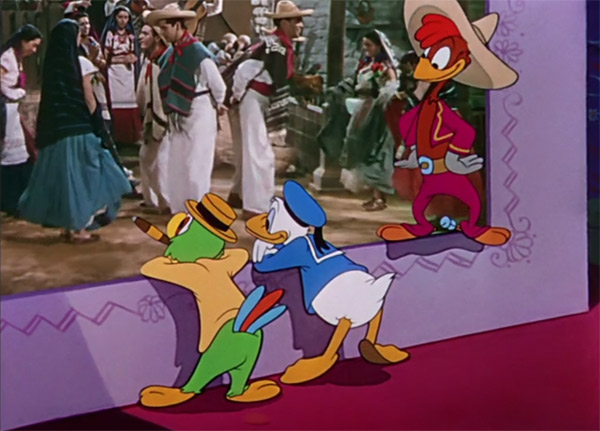
The Disney Company has become an international corporation with a brand that’s recognizable everywhere. During the 21st century, they’ve expanded well beyond animated films and theme parks and keep acquiring new parts. It wasn’t always that way, however. Back in the early 1940s, Disney was struggling with finances and had just faced a vicious strike. World War II made it even tougher to function normally, and Walt Disney and his animators spent much of their time on military projects.
The exception was a series of “package films” — animated shorts that were much cheaper than expensive releases like Pinocchio and Bambi. The first instance was Saludos Amigos, a 42-minute compilation released in 1942. It originated from a trip to Latin America by Walt Disney and a group of artists and other employees. Depicted in the documentary Walt & El Grupo, this trip inspired two pictures — Saludos Amigos and The Three Caballeros. The first release includes four short films that range between interesting cultural journeys and pretty standard comedy.
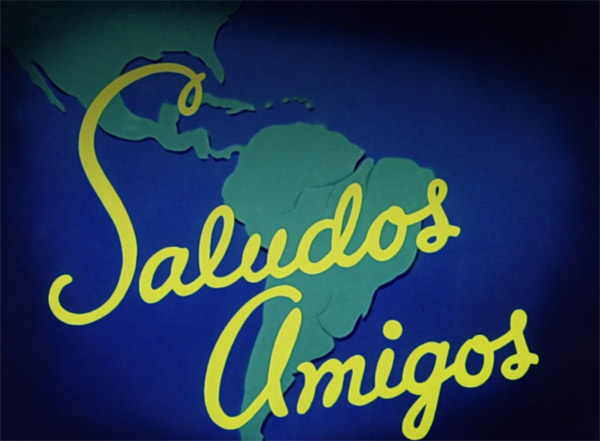
Saludos Amigos
Originally released in 1942, Saludos Amigos feels awkward because there’s little connection between shorts. The opener “Lake Titicaca” sends Donald Duck to the famous South American body of water for comic interactions with residents and animals. It’s hard to dislike much with Donald, even if he’s different than the current incarnation. The best moments involve his exasperation at navigating this new culture.
The finale “Aquarela do Brasil” introduces José Carioca, a parrot from Rio de Janeiro that gives Donald a tour of the area. This lively segment uses the formula that would be employed to greater success in The Three Caballeros two years later. The music and dancing might paint a limited picture of life in South America, but there’s more energy than typical animated material. Live-action shots of the Carnival of Brazil introduce the segment well.
I should mention that Disney Plus includes a warning about outdated cultural depictions. I appreciate the strict language that clarifies “these stereotypies were wrong then and are wrong now”. There’s little of the vague terms that we often hear. I like the live-action clips of Walt and other animators visiting the countries and learning about the culture. The question is how much this education translates to the final film. It says a lot when the most interesting segments aren’t the animated shorts.
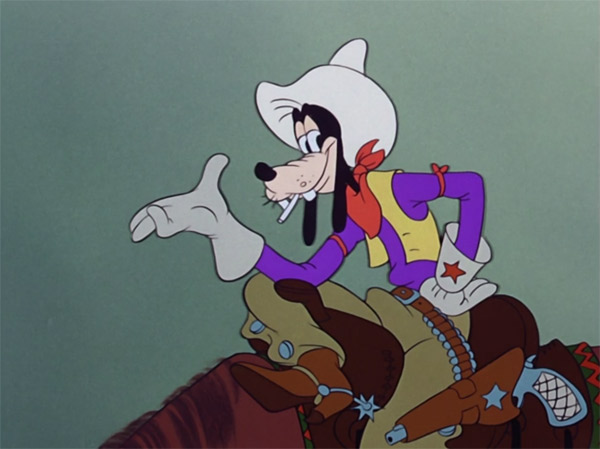
A New Character’s First Flight
The lone segment that doesn’t involve a familiar Disney face is “Pedro”, which presents the first flight delivering air mail for the title character. This “baby plane” faces many obstacles, and they generate a few chuckles, but it’s hardly thrilling. It begins at an airport in Chile and feels like a missed opportunity. We learn a bit about natural features of the country from the narrator during Pedro’s misadventures. There was just potential to offer a more comprehensive look at the lands he covers.
The other entry is “El Gaucho Goofy”, a silly take on the cowboy. Goofy is an American that learns how to become a gaucho, and some laughs come from the comically inept character and his energetic horse. Surprisingly, we meet a laid-back Goofy smoking a cigarette while on his horse. It’s what you’d expect from animation at the time and is fun but not that memorable. A serious narrator describes this important role while Goofy struggles with everything.
The 42 minutes of Saludos Amigos fly by and don’t leave a strong impression. There are silly moments and decent gags, but the end result is similar to other package films. It really feels like four shorts that aren’t connected that strongly. This film is interesting from a historical perspective, especially in terms of the trip to Latin America. I’ve watched it a few times, and the shorts just don’t leave a convincing impression.
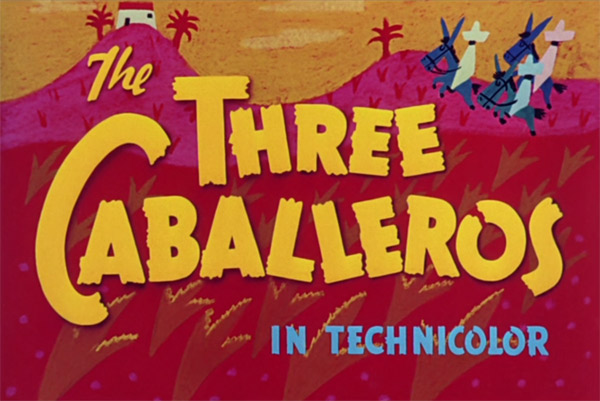
The Three Caballeros
Disney returned to Latin America two years later with The Three Caballeros, a 72-minute film with six segments connected by Donald opening presents from friends. The early shorts are pretty standard and follow Saludos Amigos’ style in presenting the culture. It opens with Donald watching a film of “The Cold-Blooded Penguin”, which shows how even a penguin wants to live there. He’s leaving his home to find the good stuff! The original voice of Winnie the Pooh, Sterling Holloway narrates the action.
Next up is “The Flying Gauchito”, which focuses on a boy in Uruguay. He meets a flying donkey named Burrito and tries to catch it for money. Narrator Fred Shields does his best to bring energy, though he’s definitely not from Uruguay. That makes everything feel a bit ickier. Shields is known to Disney fans as the voice of Great Prince of the Forest in Bambi. Setting aside the narration, it’s not a very memorable short.
A common theme is Donald’s obsession with women. In “Baía”, he re-joins José to explore the Brazilian state. He pines for singer Aurora Miranda, and it reminds me of Howard the Duck. The combination of live action and animation works pretty well given the era. Donald gets jealous of a man with a guitar and does everything that he can to get Miranda’s attention. There’s also a creepy guy playing music with a pencil in his teeth. The overall animation is more colorful and vibrant here.
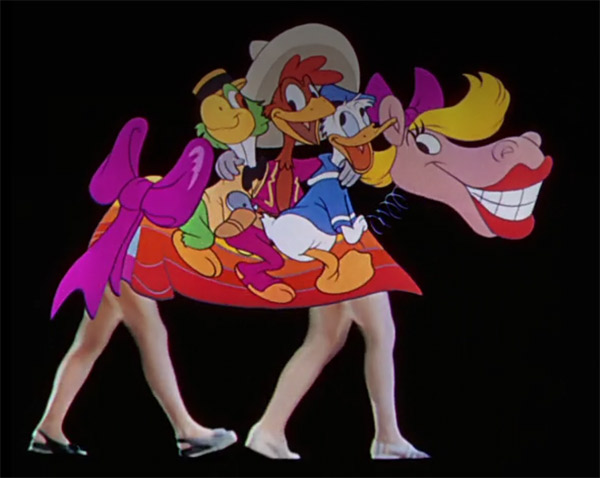
A Surreal Finale
The final 15 minutes are what shift The Three Caballeros into a different realm. First of all, Donald leads the trio to an Acapulco beach to chase after women hanging out in bathing suits. It’s meant to be endearing, but there’s a desperate and slimy side to Donald’s obsessive behavior. This is just the beginning. Singer Dora Luz arrives to sing “You Belong in My Heart”, and the dastardly duck is desperate for a kiss.
When Donald finally gets a kiss from a group of disembodied lips, the film turns into a surreal reverie that might surprise some Disney fans. It’s closer to Fear and Loathing in Las Vegas than your usual Disney film. I’m not sure how this sequence inspires people to visit Latin America, but it’s colorful and entertaining. Seeing the Caballeros’ heads with women’s legs beneath them is hardly the craziest moment. José and Panchito bring chaos to Donald’s gleeful sequence, and it’s truly hard to describe.
The Three Caballeros shows Disney’s animators unbound and trying all types of different approaches. The emphasis on music brings energy to this longer film that was mostly absent in Saludos Amigos. Panchito doesn’t appear until nearly 45 minutes into the movie when the title trio finally comes together. It’s a head scratcher at times and simplifies the culture, but this film still has something to offer today.
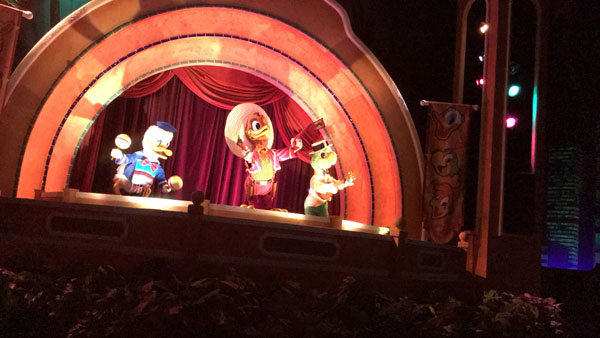
A Gran Fiesta Tour of Mexico
I’m amazed that fairly unknown characters (beyond Donald) still have a presence in the Disney parks. They provide fun moments, despite the questionable gender dynamics. The Gran Fiesta Tour boat ride most closely resembles the segment “Mexico: Pátzcuaro, Veracruz and Acapulco” from The Three Caballeros. In that segment, Panchito gives Donald and José a tour on a sarape, or flying carpet.
I’m partial to the original El Rio Del Tiempo, but the Gran Fiesta Tour still has charms. The upbeat theme builds a festive mood, and the finale with animatronics (when they aren’t broken) is a big upgrade over screens. Many of the original components remain, especially the quiet opening as we drift past the San Angel Inn restaurant. Considering the limit number of attractions in World Showcase, it’s worth a visit.
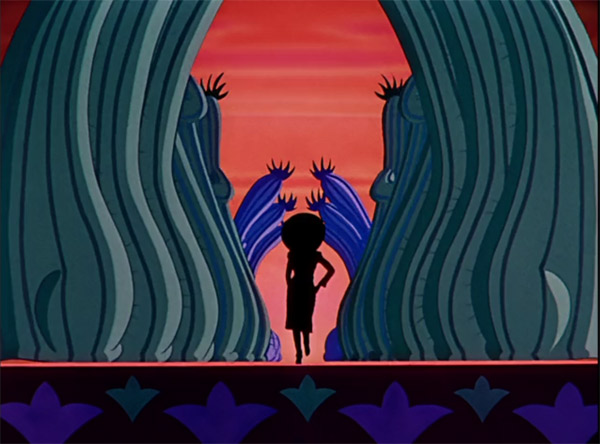
Related Articles: Saludos Amigos
Snow White and the Seven Dwarfs
This post contains affiliate links. Making any purchase through those links supports this site. See full disclosure.



Leave a Reply